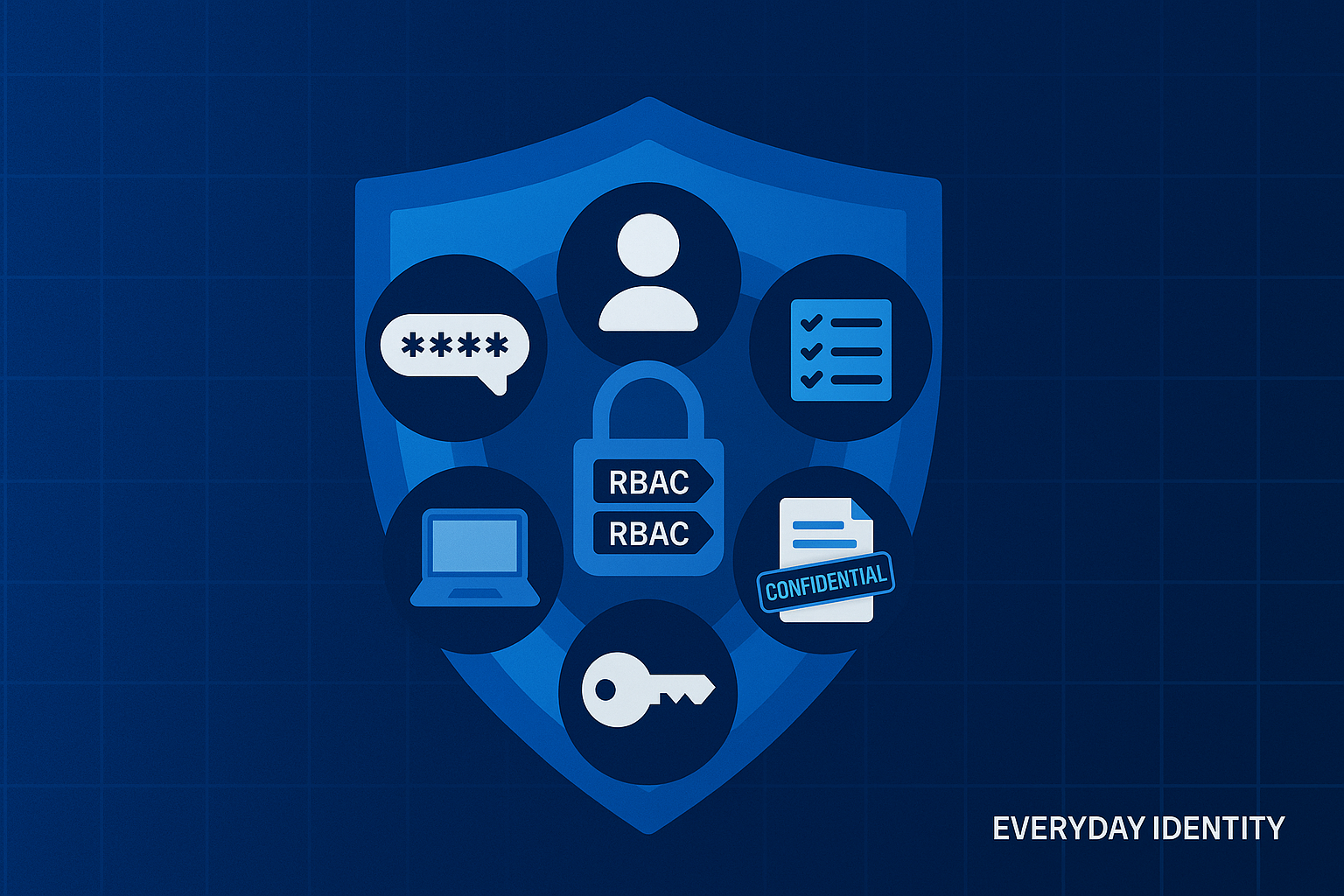Six Essential IAM Policies Every Business Needs (Beyond Passwords)

TL;DR
If your security program starts and ends with a password policy, your business is exposed. To defend against breaches, insider threats, and regulatory penalties, you need a well-rounded suite of Identity & Access Management (IAM) policies—clear, actionable rules that leave no gaps for attackers (or auditors) to exploit.
This post breaks down six foundational IAM policies, when to use them, why they matter, and how to link them together for real-world protection.
Why Policies Matter: Not Just for Compliance
Security policies aren’t just “paperwork” for the auditors. They’re how you make security real—by setting expectations, defining boundaries, and ensuring everyone (and everything, including bots and APIs) is playing by the same rules.
Without comprehensive policies:
- Human error flourishes. Staff aren’t sure what’s allowed—or how to stay safe.
- IT “winging it” leads to holes. Inconsistent onboarding, shadow IT, and legacy accounts go unchecked.
- Audits and breaches become disasters. You can’t prove what’s required—or show who dropped the ball.
The Six IAM Policies Every Business Needs
Below are six foundational policies, with direct links to full, downloadable templates (free to use or adapt):
1. Comprehensive Password and 2FA Identity Policy
What it covers:
Rules for strong passwords, multi-factor authentication (MFA/2FA), credential management, rotation, storage, and incident response.
Why it matters:
Passwords remain the top attack vector. Enforcing strong, unique passwords plus 2FA/MFA makes brute force and phishing attacks much harder. It also keeps your security posture in line with modern frameworks like NIST and ISO.
When to use:
Applies to every system, application, and user—including vendors, APIs, and service accounts.
2. Acceptable Use Policy (AUP)
What it covers:
Defines what users can and can’t do with company technology—covering everything from internet and email use to device management, data handling, and reporting obligations.
Why it matters:
Prevents shadow IT, limits risky user behaviors, and creates a defensible baseline for disciplinary actions and incident response.
When to use:
For all employees, contractors, and third parties who interact with your IT environment—on-premises or remote.
3. Access Provisioning and Deprovisioning Policy
What it covers:
How access is granted, modified, and removed—for humans and non-human identities (APIs, bots, service accounts). Includes joiners, movers, leavers, access reviews, and documentation.
Why it matters:
Most breaches stem from too much access, orphaned accounts, or late removals. This policy ensures no one (and nothing) has more access than needed, and that doors are locked promptly when people or integrations leave.
When to use:
For all onboarding, role changes, offboarding, and new application or API integrations.
4. Least Privilege and RBAC Policy
What it covers:
Enforces least privilege and role-based access for all identities. Prevents privilege creep, limits admin rights, and standardizes permission assignment.
Why it matters:
The fewer people or systems with high-level access, the lower your risk. RBAC keeps entitlements clear, auditable, and business-driven—not arbitrary.
When to use:
Across your entire environment—HR systems, cloud apps, developer tools, SaaS, and infrastructure.
5. Data Protection and Classification Policy
What it covers:
How all data is labeled (public, confidential, restricted, etc.), who owns it, and how it must be stored, transmitted, accessed, and destroyed. Applies equally to human users and non-human integrations.
Why it matters:
Modern privacy laws (GDPR, HIPAA, SOX) demand clear evidence of who can see what. This policy prevents accidental leaks, ensures encryption, and clarifies data handling in every scenario.
When to use:
Everywhere your company data lives or travels—including SaaS, cloud storage, emails, and third-party processors.
6. Device Security Policy
What it covers:
The minimum security requirements for all endpoints—laptops, phones, tablets, servers, IoT, and automation devices (bots, APIs). Covers authentication, encryption, patching, backup, remote wipe, and more.
Why it matters:
Lost or compromised devices can become an instant breach. This policy ensures every device—even personal/BYOD or “headless” servers—meets your baseline before connecting to sensitive resources.
When to use:
All company-issued, BYOD, and “headless” devices that touch company data.
Real-World Use Cases: Connecting Policy to Daily Practice
- Onboarding a new employee or contractor?
Provision only what’s required (Policy 3), ensure they’re covered by AUP and Device Security (Policies 2 & 6), and enforce strong credentials (Policy 1). - Rolling out a new SaaS app or automation bot?
Use RBAC and Data Classification to scope permissions and limit risk (Policies 4 & 5), and treat that API key like any other identity. - Preparing for an audit or compliance check?
Policies 3, 4, and 5 provide the audit trail and standards the auditor expects. - Dealing with remote work or BYOD?
Device Security (Policy 6) and AUP (Policy 2) become even more critical to set boundaries and keep data off insecure endpoints.
How to Use These Policies
- Download and customize:
Each policy is available in markdown for easy editing and integration into your existing governance program. - Educate your teams:
Roll out policies as part of onboarding, security awareness, and ongoing training—not just a “checkbox” for auditors. - Automate enforcement:
Pair policies with technical controls—like SSO, RBAC tooling, endpoint management, and DLP solutions—for real, ongoing compliance. - Review and adapt:
Threats and business needs change fast. Review policies at least annually (or after major incidents).
Final Thoughts: A Mature IAM Program is More Than Passwords
Great security starts with strong passwords, but real maturity means thinking in layers, with clear policies, automation, and continuous review.
These six policies form the backbone of a defendable, future-proof IAM program—whether you’re a 10-person startup or a global enterprise.
Want the full markdown templates? Download them free below:
- Comprehensive Password and 2FA Identity Policy
- Acceptable Use Policy (AUP)
- Access Provisioning and Deprovisioning Policy
- Least Privilege and RBAC Policy
- Data Protection and Classification Policy
- Device Security Policy
Everyday Identity – Breaking down Identity, one post at a time.